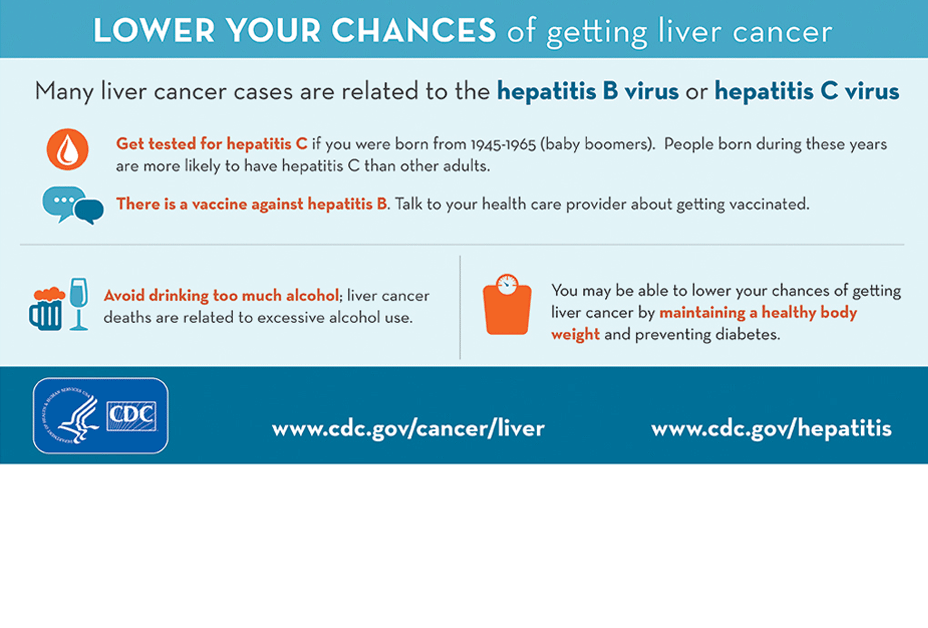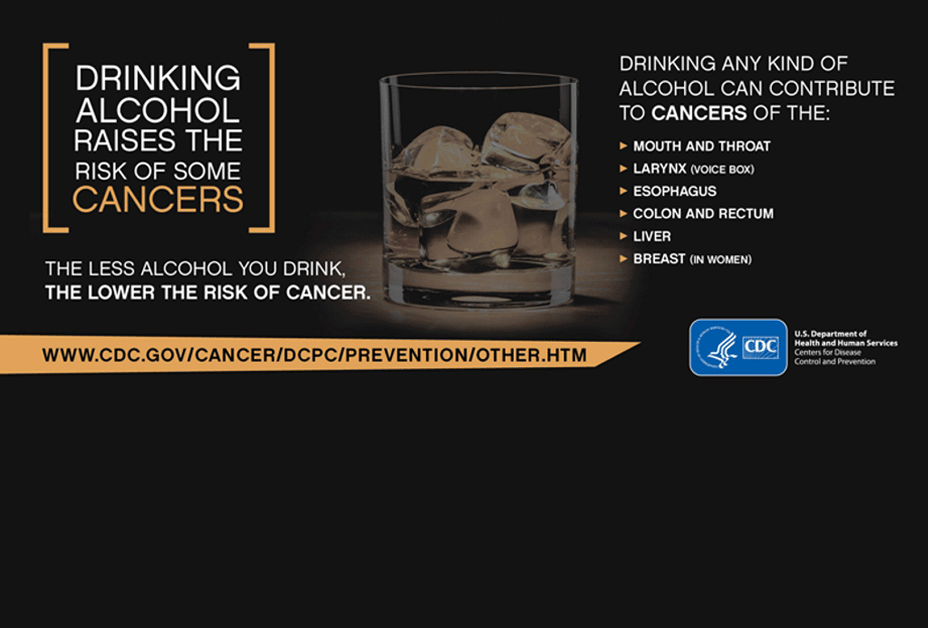Liver Cancer

The liver is the largest organ in the human body, located on the upper right side of the body, behind the lower ribs. The liver stores nutrients, removes waste products from the blood, and produces bile, a solution that helps digest fats and eliminate waste products. Many liver cancer cases are related to the hepatitis B virus or hepatitis C virus. Heavy alcohol use, obesity, and diabetes also can increase risk for getting liver cancer. To lower your risk for liver cancer, get vaccinated against Hepatitis B, get tested for Hepatitis C, and don’t drink too much alcohol.
Quiz
Key Facts
- New liver cancer cases and deaths are on the rise in the United States.
- Many liver cancer cases are related to the hepatitis B virus or hepatitis C virus.
- Heavy alcohol use, obesity, and diabetes also can increase risk for getting liver cancer.
- Symptoms can include discomfort in the upper right side of the abdomen, a lump below the rib cage, jaundice, and nausea.
- Each year in the U.S., about 22,000 men and 9,000 women get liver cancer, and about 17,000 men and 8,000 women die from it.
Media
Prevention Tips
- The Hepatitis B virus can lead to liver disease or liver cancer. The Hepatitis B vaccine is recommended for all infants at birth and for adults who may be at increased risk.
- If you were born between 1945 and 1965, CDC recommends that you get tested for Hepatitis C, a virus that can lead to liver cancer.
- Avoid drinking too much alcohol
- Page last reviewed: October 2, 2017
- Page last updated: October 2, 2017
- Content source:


 ShareCompartir
ShareCompartir


